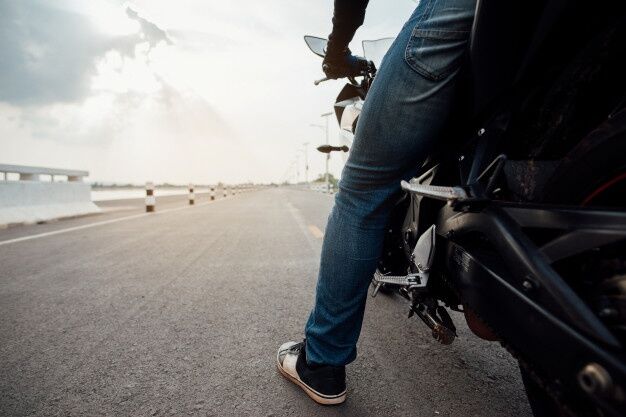How to not become another motorbike road death statistic in Thailand

While many have experience riding motorbikes, the driving situation in Thailand can be wildly different. As the kingdom’s roads are ranked as some of the most dangerous in the world, it helps to have your wits about you when driving. As a visitor to this beautiful country, keep in mind that you are, indeed, an outsider. This can be felt in many different circumstances in Thailand, but it isn’t inclusive to this country. One thing of which to be aware is that of most accidents that involve a Thai person will end in the ex-pat, tourist, or ‘farang’ having to pay regardless if it is their fault.
Another thing to remember is that most motorbike accident insurance companies will not cover an accident unless the driver has a proper Thai driving license and is wearing a helmet at the time of the accident. But, hopefully, an accident won’t be something to worry about. Here, we have a few rules to help you understand traffic rules and the general way in which to drive around Thailand.
- Always use your back brakes or left-side handlebar brakes first. This will help you avoid a myriad of accidents that can occur. The back brake allows you to stop slowly, while the front brake is to help you stop abruptly. However, without using the back brake first, your sudden need to stop can end in a front flip. And, that may not be what you are looking for in a motorbike driving experience.
- Know that everything to the sides and in front of you is your responsibility. This is something that many Westerners or those from abroad fail to understand, resulting in accidents that are equally confusing. So, in typical European or American countries, if someone cuts you off or stops abruptly in front of you, that person is responsible for you banging into their rear. But, in Thailand, the exact opposite holds true.
- Beware of sand and water on the roads. This may seem like an obvious statement, however, sand can be hard to see when driving. In colder countries where it snows, sand can be equated to black ice. It is sneaky and extremely slippery. When the Thai New Year of Songkran rolls about, it is not advised to drive a motorbike through the wet, slippery streets and some people will also add to your road trip misery by throwing water directly into your face. Many accidents have occurred during the Songkran holiday, making the government call such holidays the “Seven Dangerous Days.”
- Always wear a helmet. Surprisingly, many tourists and ex-pats (not to mention Thai nationals) don’t feel the need to wear a helmet. The laughable Covid-19 trend of wearing a mask with no helmet is no joke. Another piece of advice: those Lotus helmets are the bare minimum when it comes to protection, with many referring to them as traffic ticket dodgers. It is advisable to spend a little bit of money on a brain bucket as your head, indeed, is the most important part of your body.
- Keep a cool head. This goes for every situation in Thailand. If an accident happens and you can communicate, it is best to not show extreme emotions. As Thai culture views showing emotions as something only for rare occasions, flipping your lid at a Thai person over an accident won’t have a good outcome.
As these are just a few of the tips that can help you when driving a motorbike in Thailand, always remember the most common safety rules: drive slow, don’t get arrogant when driving on sandy or watery roads, and wear a helmet. Needless to say, unless you want to be a part of Thailand’s dangerous road death statistics, practise smart and safe driving at all times!
Latest Thailand News
Follow The Thaiger on Google News:
























